I was going through some folders this morning and found my hand-drawn Lunar Wane maps that were the source material used in the Glorantha Sourcebook. Unlike Greg’s originals, these extended south to Kero Fin (although Sartar was just off screen). They present quite a bit of additional information, and are easier to read as well.
Lots of information in here – particularly important are the 7th and 8th Wane maps.
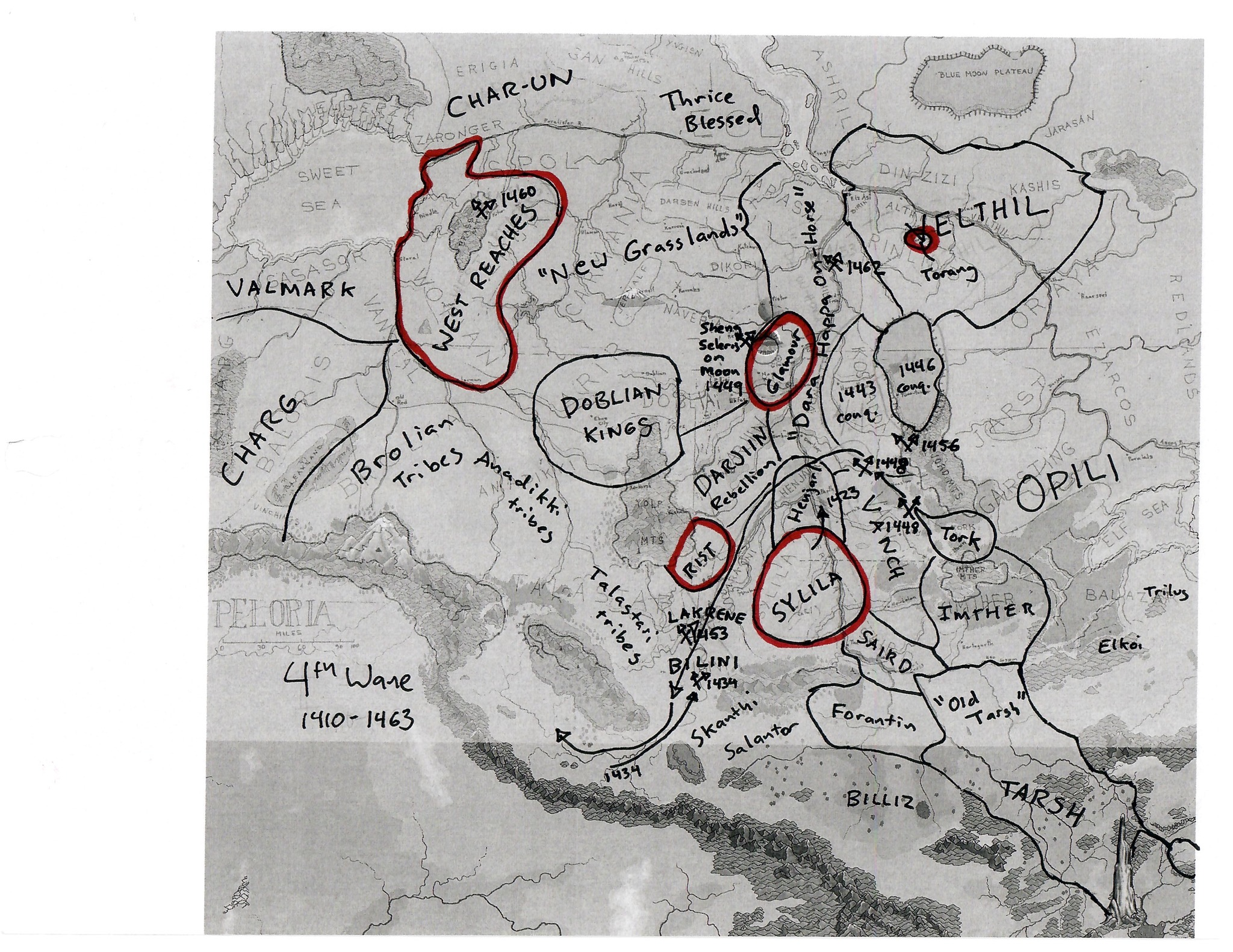
This maps shows with great clarity how reduced the Lunar “Empire” was in the 4th Wane. Tarsh is more influential than it looks, as Tarshite armies made it into Vanch, Imther, and to their unfortunate end Tork.
The New Grasslands were areas that had been depopulated by the Pentans and used as pasture. Dara Happa on Horse and Velthil both were clients of Sheng Seleris.
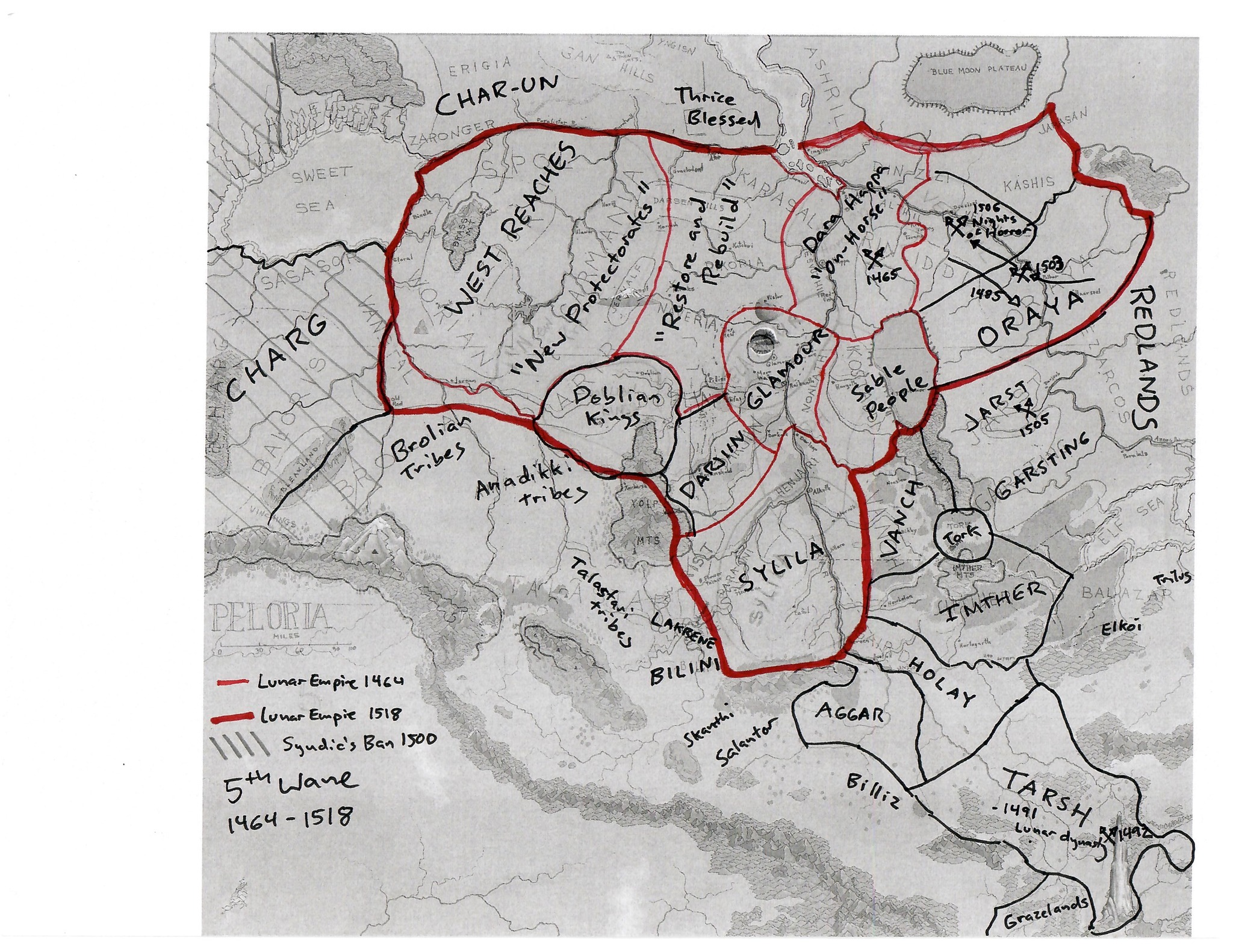
I look at this map as the foundation of the Lunar Empire we all know and love. The New Grasslands are the key focus of the Restore and Rebuild movement.
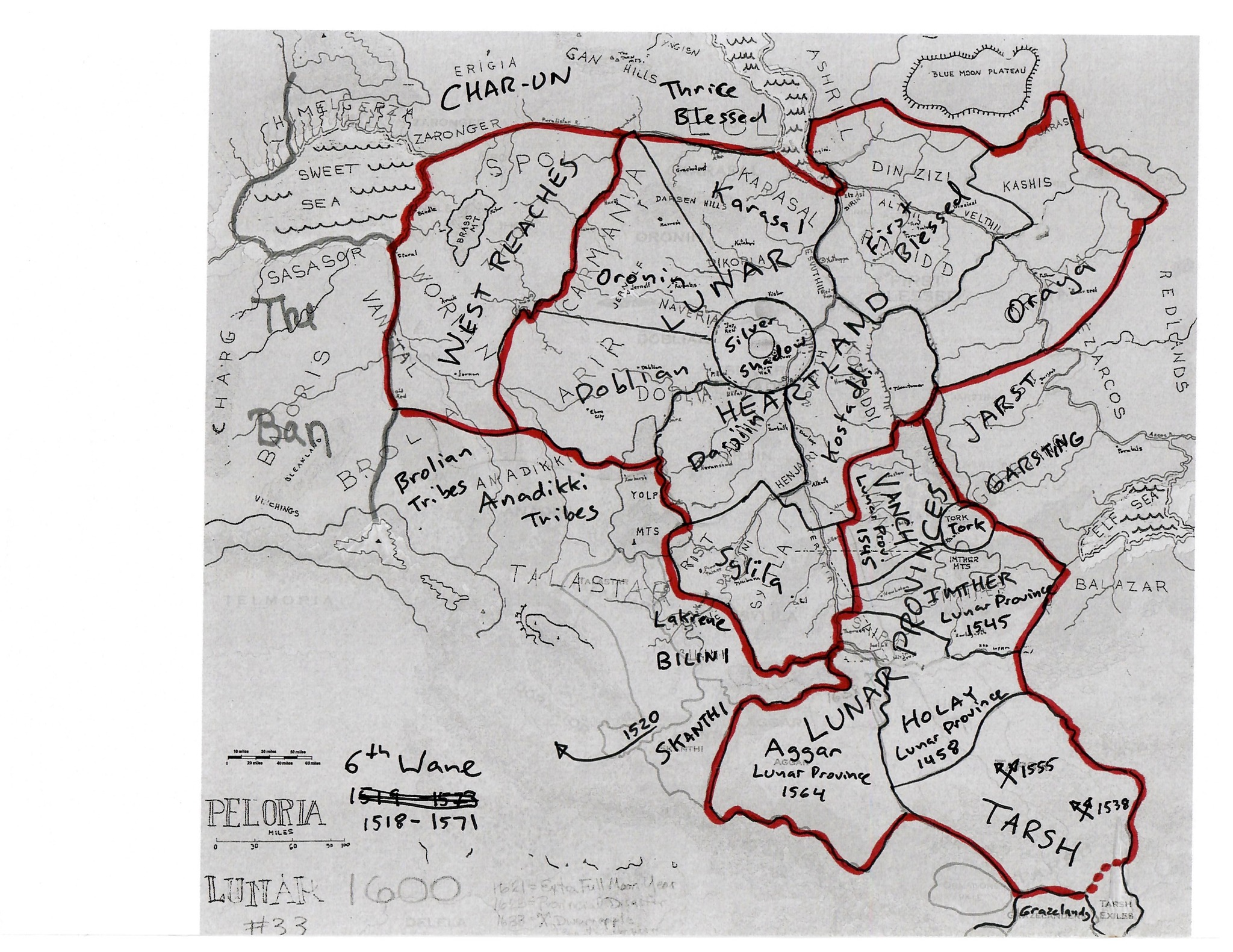
The 6th Wane sees the establishment of the Lunar Provinces and the modern satrapies. It is what we usually think of when we imagine the Lunar Empire.
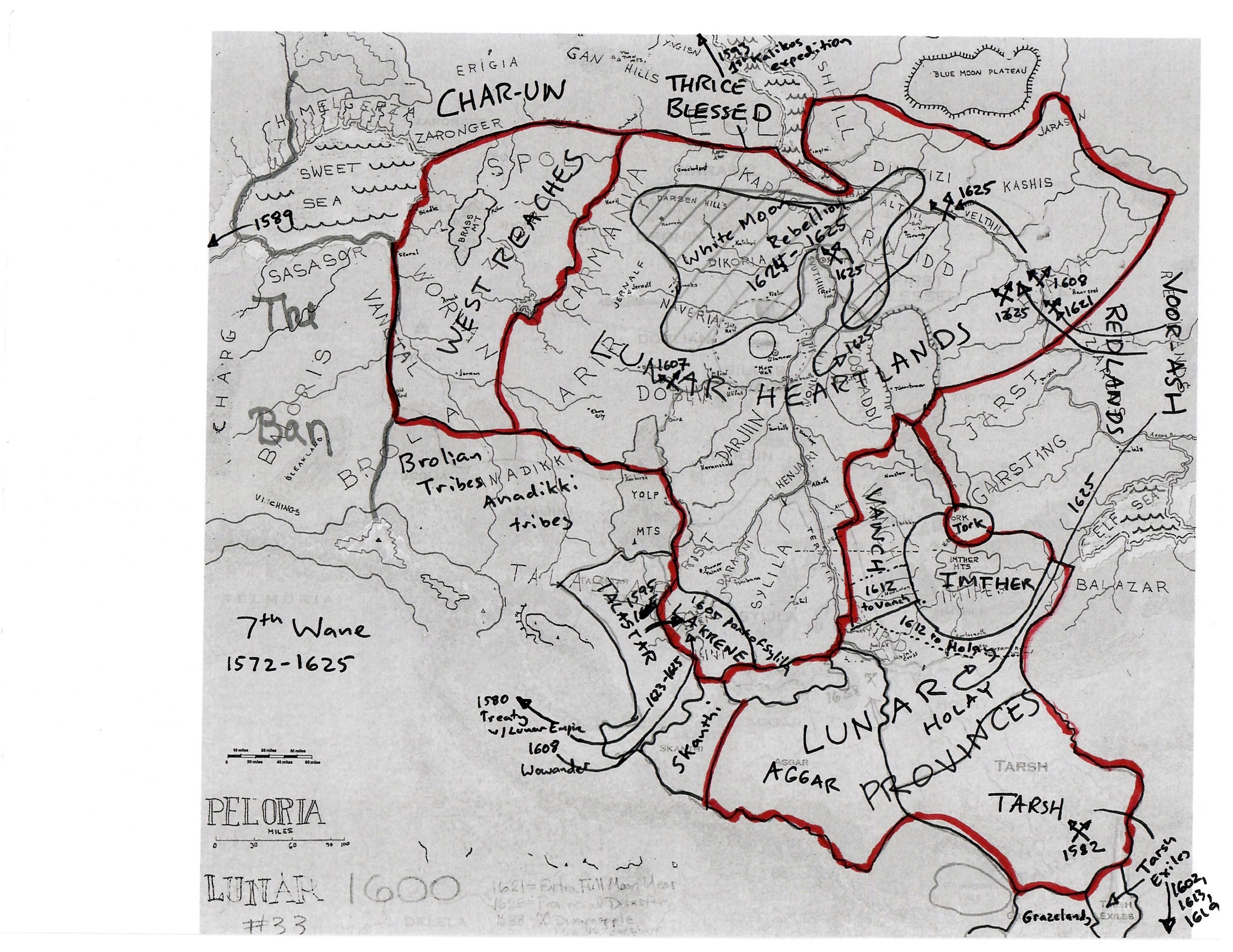
The 7th Wane witnesses the zenith of Lunar power, but we can also see the cracks in the facade. Two things worth paying attention to:
In 1624, the White Moon Rebellion breaks out First Blessed, Karasal, Oronin, and Silver Shadow satrapies. Suffering from crop failures and drought, the peasants rebel when the White Moon movement is forcibly suppressed by the empire.
The other thing to check out is the emergence of a powerful Pentan confederation, the Voor-ash. This is rightly perceived as a much bigger danger than anything going on in Dragon Pass or Prax. Look at those deep raids by the Voor-ash, reaching the gates of Yuthuppa, Vonlath, and the Black Eel River. This hits during the White Moon Rebellion and then comes the Dragonrise.
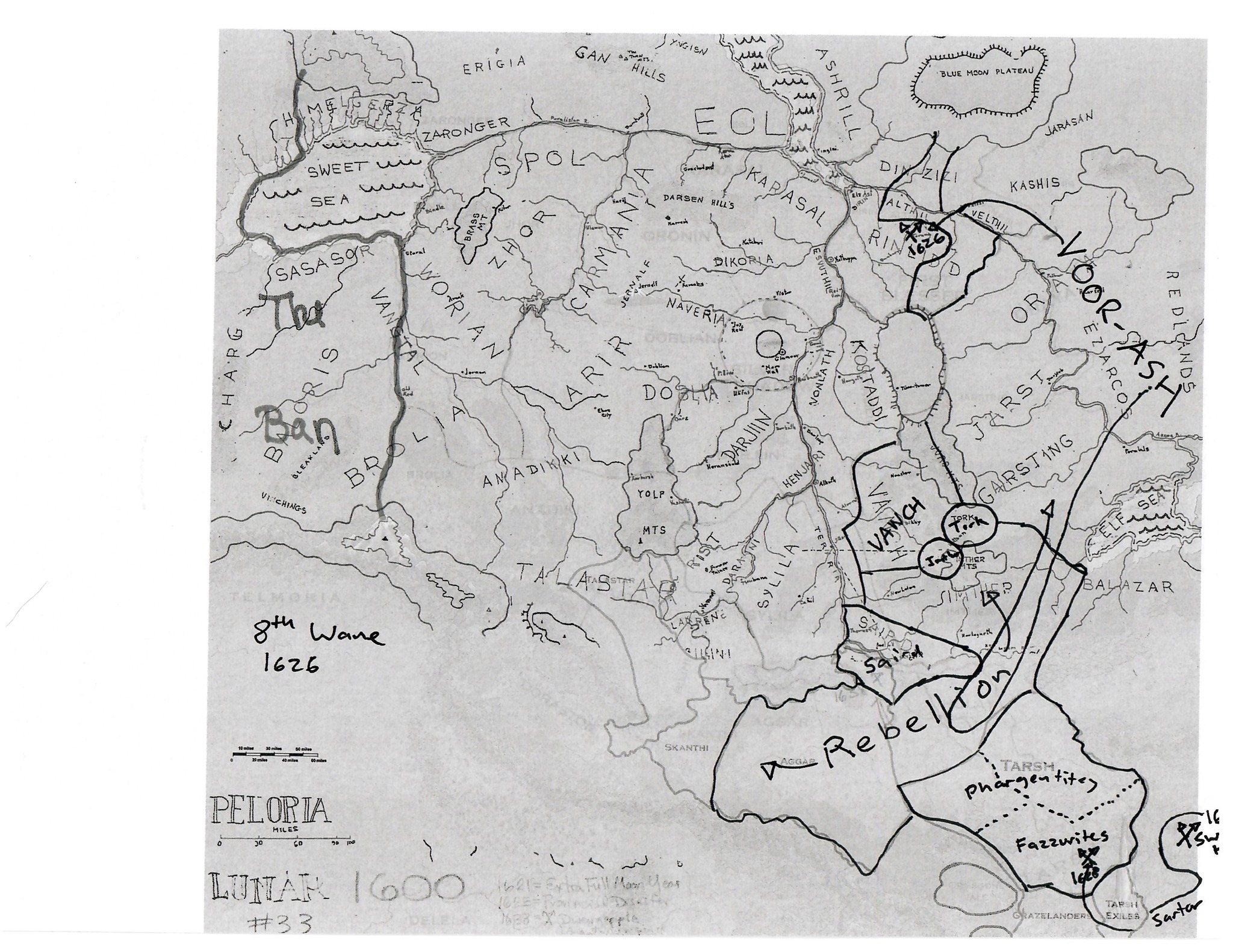
This really just shows what is going on in 1626. The Lunar Empire must strip the Provinces of imperial troops (beyond what King Pharandros manages to hold onto in Dragon Pass and throws at reconquering Sartar). Everything, I mean EVERYTHING, is sent to Torang to defend the Blessed City.
![]()
![]()
Lunar propagandists usually present the empire as all-powerful, all-seeing, with a population that enthusiastically agrees with Lunar propaganda. This is of course not always the case.
That is something I also find odd – the Lunar Empire is theocratic, not totalitarian. Maybe the Irrippi Ontor scribes wish otherwise (as scribes often do), but the empire tolerates apathy; indeed, it likely prefers it to dangerous enthusiasts like the White Moon preachers.
But one thing that this series shows is that for the whole of the 6th and most of the 7th wanes, the Lunar Heartlands were at peace. About a century without civil war, invasion, or major upheavals. Dart Wars replace warfare among the nobility, and even banditry is rare in the Heartlands.
In short, for about a century, the Lunar Heartlands are probably the best administered, most peaceful areas in Genertela. This is the Five Good Emperors, the High Qing or the Rule of Wen and Jing.
Yes, it all falls apart starting in 1621 (although if you look carefully the cracks show up about a generation earlier), but it is an amazing achievement.
